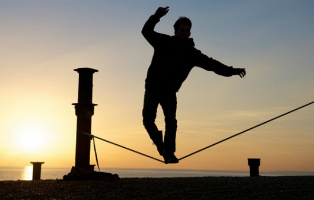Maintaining good balance is essential for overall health and well-being, yet it is often overlooked in regular fitness routines.
According to the Centers for Disease Control and Prevention (CDC), one in four Americans aged 65 and older experiences a fall each year, often resulting in injuries and a decreased quality of life.
Balance is not just important for the elderly; it plays a crucial role at every age in preventing injuries, enhancing athletic performance, and improving daily functional movements.

Research indicates that balance training can reduce the risk of falls by nearly 20% in older adults and improve coordination and stability across all age groups.
Furthermore, a study published in the Journal of Strength and Conditioning Research found that individuals who engaged in regular balance exercises exhibited better muscle control and greater confidence in their physical abilities.
With these statistics highlighting the significance of balance, it’s clear that integrating balance-improving exercises into your routine can lead to a healthier, more active lifestyle.
This guide delves into practical tips and advanced techniques to help you master the art of balance, ensuring you can enjoy a more confident and injury-free life.
Best Techniques to Improve Your Balance
Improving your balance is crucial, especially as you age.
Follow these steps to enhance your stability and reduce the risk of falls:
Regular Eye and Ear Check-Ups
Vision and hearing significantly contribute to maintaining balance. Schedule regular check-ups with your healthcare provider to ensure these senses are functioning optimally. This can help you catch any issues early and address them before they affect your balance.
Review Medications with Your Doctor
Some medications can cause dizziness or light-headedness, impacting your balance. If you experience these symptoms, speak with your doctor about adjusting your dosage or switching medications.
Strengthen Your Core
A strong core is essential for good balance. Incorporate exercises such as yoga or weight lifting into your routine to build core strength. A solid core helps stabilize your body and improves balance in everyday activities.
Ensure Proper Nervous System Function
Misalignments in the spine can disrupt the nervous system, affecting balance. Visit a chiropractor to address any spinal issues that could be contributing to balance problems. Proper alignment can help your nervous system send accurate signals throughout your body, enhancing coordination and stability.
Practice Balance Exercises
Engage in balance-specific exercises like standing on one leg, using a balance board, or practicing tai chi. These activities can help improve your proprioception, the awareness of your body in space, and enhance your overall balance.
Stay Active and Avoid a Sedentary Lifestyle
Regular physical activity is key to maintaining balance. Incorporate a mix of cardio, strength training, and flexibility exercises into your routine to keep your body strong and agile.
Key Takeaways
Improving your balance is a vital aspect of maintaining health and preventing injuries at any age.
Regularly scheduling eye and ear check-ups can help ensure that your senses, which are crucial for balance, are functioning optimally. It’s also important to review medications with your doctor, as some can affect balance.
Strengthening your core through exercises like yoga or weight lifting can enhance stability. Additionally, ensuring proper nervous system function, possibly with the help of a chiropractor, can improve coordination.
Practicing balance exercises such as tai chi or using a balance board can boost proprioception, while staying active and avoiding a sedentary lifestyle will keep your body agile and strong.
By incorporating these techniques into your routine, you can enjoy a more confident, injury-free life.
To read up on more health and wellness tips follow our blog here. If you enjoyed our blog like and share below!


